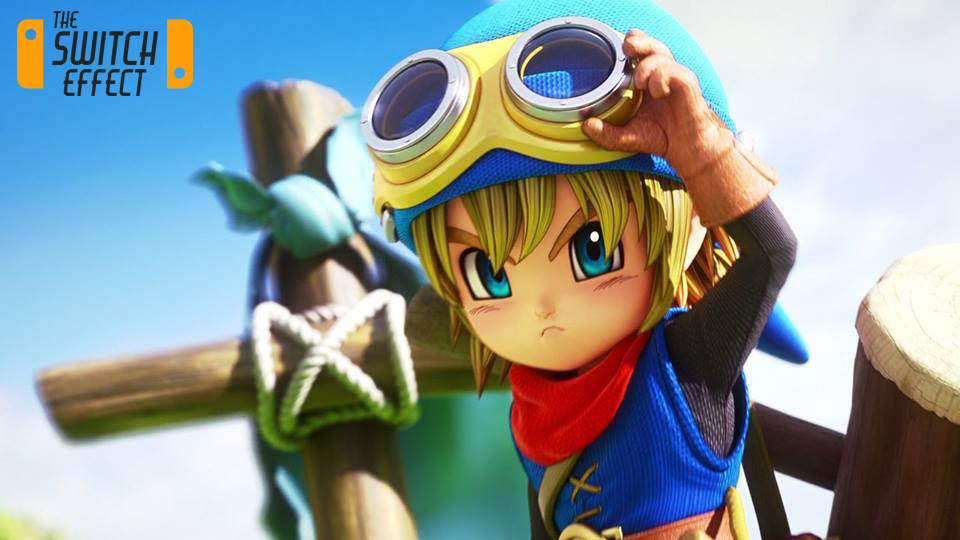[Review] Dragon Quest Builders – Nintendo Switch

Dragon Quest Builders
Nintendo Switch
Developer: Square Enix
Publisher: Nintendo
Category: Role-Playing, Action, Adventure
Release Date: 02.09.2018
Dragon Quest Builders for Nintendo Switch has been a questionable game release by Square Enix in the wake of Minecraft’s popularity. While the graphics look pretty and the game is combined with a long time fan favorite, Dragon Quest, the potential for greatness was really there. I was never a big fan of Minecraft; it felt too vague and ultimately I got bored of it pretty quick (unpopular opinion, I know), so I was a little wary about Dragon Quest Builders. Bringing in the Dragon Quest series to a Minecraft-like game was smart. People like myself will buy the game just because it says Dragon Quest in the title. However, how would the game play stand up to its name? Would it be a game that I would obsess over or would it just be a part of my collection, gathering dust up on my shelf?
Well, after clocking in 20 hours of game play since it came out on Friday (I have kids, so that’s a lot), I think I can confidently say that I am in love with the game. Love really isn’t the name, really. I’m all ready looking forward to Dragon Quest Builders 2.
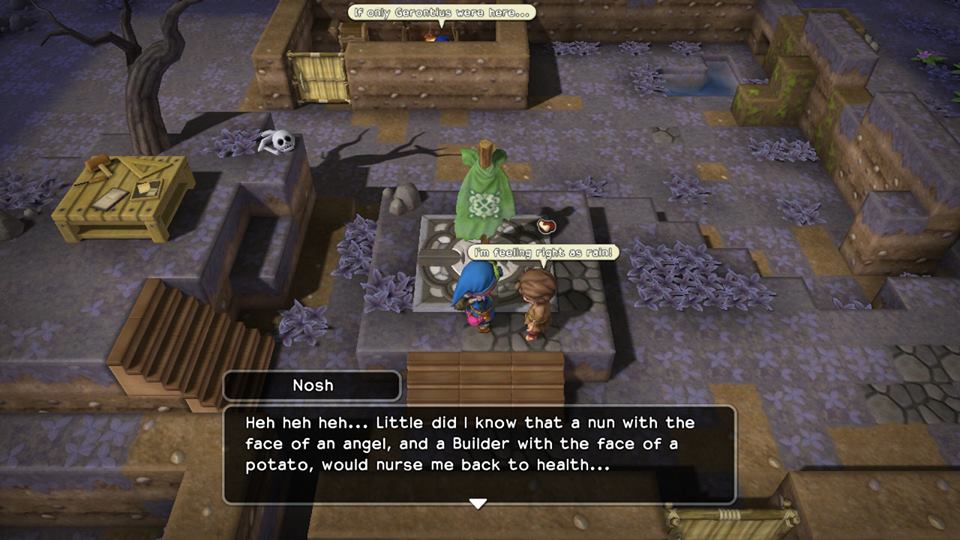
Ultimately, if someone were to ask me to describe the game, the first thing I would blurt out is, “It’s like Minecraft, but better!” But really, it is so much more than that. It is Minecraft. It is Fantasy Life. It is Dragon Quest. Take all of those components, throw them in a pot and stir them together and…you have Dragon Quest Builders. If I were to have on complaint about the game, though, is that there is quite a limited character creation. You can change skin, hair, and eye color…and that’s it. It would have been nice to have a bit more freedom in terms of creating a character to fit what you want. But really, if that’s the biggest problem with the game, we’re doing pretty good.
Breaking it down, though, it is unjust to call it a Minecraft look alike. Overall, the game is still an RPG, as the Dragon Quest’s before it, but you get introduced to the building simulator as you complete quests. It does seem like an odd combination, RPG and building simulator, but it really works. None of it seems awkward and it really feels like games like this should have existed all along.
Alefgard was once a lush world run by humans, but it has been wiped clean and set humans back to the stone age. The humans of the world have forgotten how to build and create and are crouching in fear to the Dragon Lord and the peril that he has brought to Alefgard. But you, the all might Builder, must wake up, head out in to the destroyed world, and rid it of the darkness. You must help its people remember what it is to be human and how to creatively build what they want and need. Using a flag, you will mark the center of an important town in the history of Alefgard and begin repairing it to its former glory. You, Builder, must save the world.
You aren’t given everything you need from the beginning. Through the veil of quests, unlocking the basics of building, creating, repairing, gathering resources, and creating new weapons are all slowly introduced to you. You can’t unlock a more advanced tool until you have completed the story line and quests that precede it.
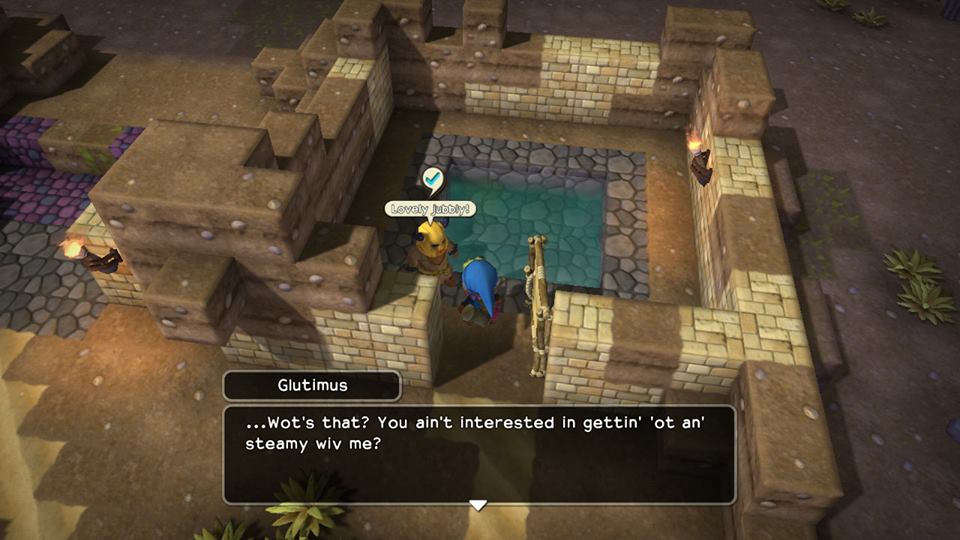
Spread throughout four chapters, each town you encounter is suffering from a unique problem that you must help them overcome. In addition, each town that you will encounter will have certain specialties which will help expand your item and blueprint library. You will encounter your fair share of slimes as well as plenty of enemies that you will recognize from the Dragon Quest franchise. As you rebuild your town, monsters will periodically attack you and you will have to defend your town (or tower, if we are going to call this scenario what it is), and this is where another problem with the game comes in: the combat system.
Your hero is primarily a builder and gatherer, so combat is not your main focus (the exception being the final boss battles where you will utilize unique tools to help you beat them). At best, the battle system feels clunky. While you can upgrade your weapons, it feels more like upgrading your ability to mine and gather resources more efficiently than a means to defeat enemies more swiftly. With Dragon Quest Builders 2 having been announced for the Switch, I really hope to see this improved in the sequel. I have to admit, too, that the jump in combat difficulty from Chapter 2 to Chapter 3 almost feels like an excessive jump. I did get a bit frustrated with the super jump in difficulty, but it didn’t stop me from playing through the game.
This issue doesn’t really take away from the game, though. Filled with plenty of quests and ability to create to your imagination’s content, the game definitely gives you a sense of satisfaction as you play. So long as your buildings are at least two blocks high, has a light source and a door, you can create as you see fit. While four chapters may seem short, the game doesn’t just end at the four chapters. Firstly, you will want to replay each chapter at least once as, once you beat a chapter, you will have access to a list of that chapter’s challenges. These challenges will give you unique items to use in your town and also take with you to Terra Incognita, but we will get to that in a little bit.
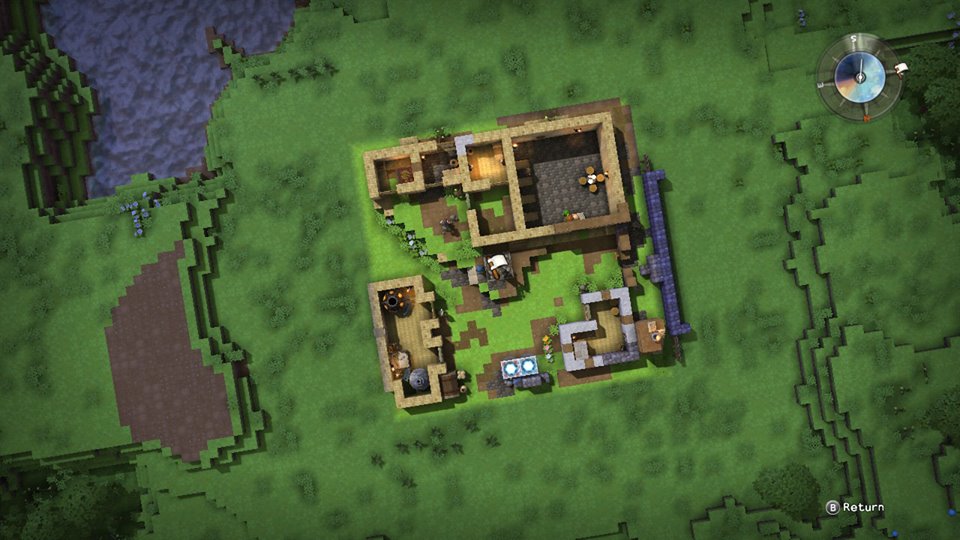
A key feature to unlocking your town’s true potential is to experiment with buildings and letting your creative architect fly. With the need to level up your town, you can either place random stuff all over the place all willy nilly like a complete rebel…OR you can get creative and try out building different types of structures. Who knows, you might unlock something unique! Build up your town and make it the utopia that its population so desperately wants. Pay attention to your residents, too. While sometimes they may not give you quests, they will give you clues to challenges and items you can unlock.
Once you have exhausted all of the chapters, or if you just want a break in between chapters, you will want to load up Terra Incognita; this becomes available after you beat Chapter 1. Terra Incognita is much less structured than the story mode of the game, but lets you build to your heart’s content. But there’s a catch…you will only have access to resources, items, blue prints, and islands from chapters you have completed. It seamlessly integrates with the entire game; while providing an alternative form of game play as well as a break in between chapters if you just want some light hearted fun.
In Terra Incognita, though, the fun doesn’t stop there. You can place up to 100 summoning stone which bring, at random, buildings that other’s have created. It can help give you inspiration for your own structures. In addition, you have a market off area set with a sharing stone where you can build a single structure or many structures and share it with others who are playing Dragon Quest Builders.
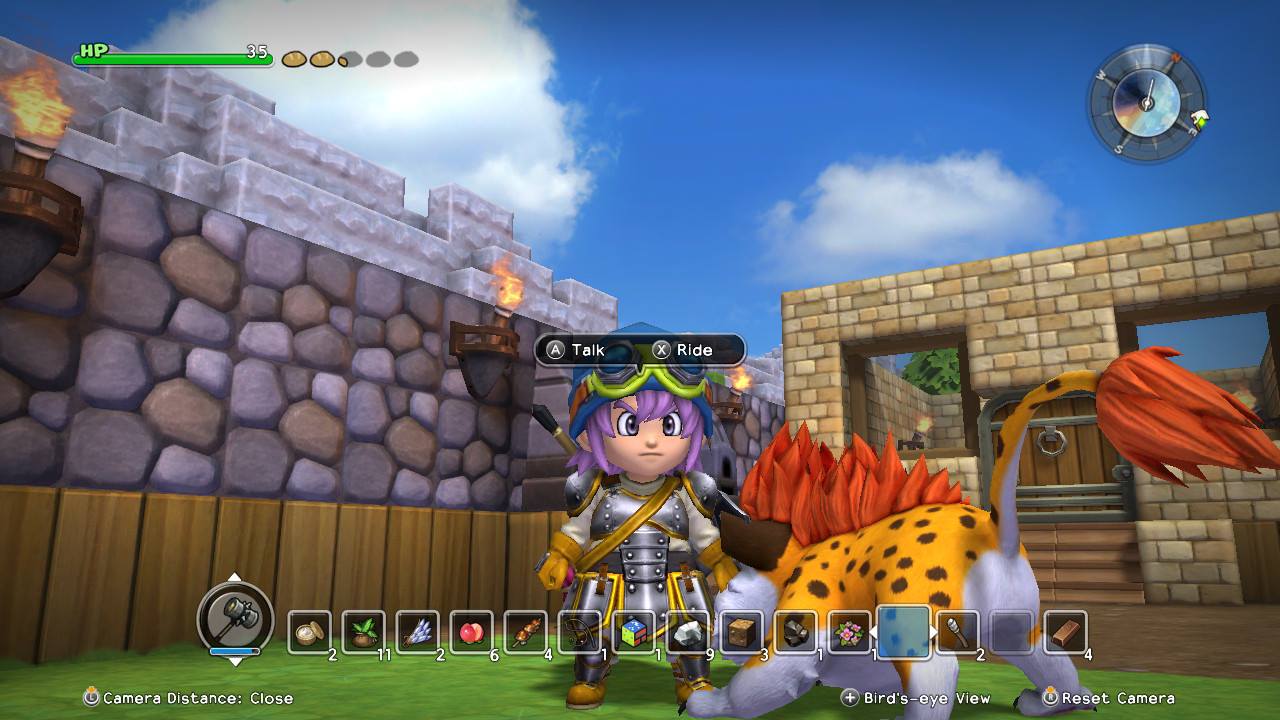
Overall, this is probably one of my favorite games that has come out this year. With the colorful and sleek art style of Akira Toriyama and the orchestral sounds of Koichi Sugiyama’s compositions, you will find yourself really sinking in to the Dragon Quest world. Throughout the game, you will laugh. There are quite a few moments where I had to stop and reread what a character had just said the make sure I had understood them right. I always read it right, and it just made me enjoy the game more. Some of the joke’s were verging on the PG-13 side, but really not too inappropriate, so I would be comfortable with my children playing this game. Taking the classic Dragon Quest RPG that have always loved and mixing in a Minecraft-like building sim, Dragon Quest take all the right ingredients and puts them together in to a great game that people of all ages can enjoy.
Playability
The playability of this game is incredible no matter how you choose to play it; handheld, docked, joy con, pro controller, they all work great with the game.





Buy Dragon Quest Builders
$44.60

